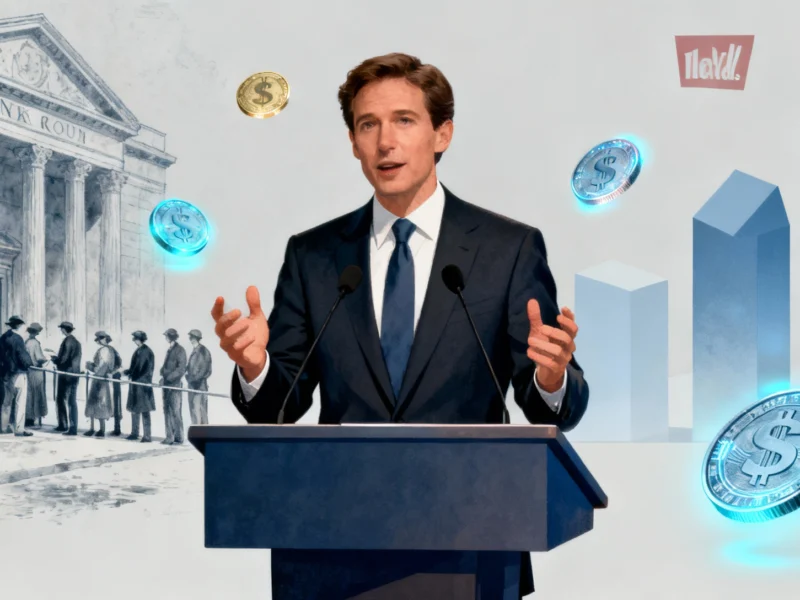Federal Reserve Official Raises Alarm Over Stablecoin Growth
A senior Federal Reserve official has highlighted potential stability risks in the rapidly expanding stablecoin market, according to recent statements made at a major financial technology conference. Federal Reserve Governor Michael Barr expressed concerns about how these digital assets could affect broader financial stability during his appearance at DC Fintech Week.
Historical Parallels and Run Risks
Speaking at the Thursday event, Barr pointed to historical examples of private money runs as cautionary tales for the current cryptocurrency environment. “Looking at the long history of runs from private money is a helpful reminder of how these runs can happen and what’s at stake when they do,” Barr stated in his official remarks. He referenced periods in U.S. history when banks issued competing forms of currency, suggesting similar dynamics could emerge in the stablecoin market.
Analysts suggest that Barr’s concerns stem from the fundamental structure of stablecoin operations. “The fragility of private money is inherent in the way that it is created,” he explained, noting that financial institutions “issue liquid liabilities to the public that are redeemable on demand and at par, but issuers risk being ultimately unable to liquidate their assets promptly at par when facing run dynamics and market stress.”
Regulatory Landscape and Market Development
The stablecoin market has experienced significant growth since the Senate passed the landmark GENIUS Act earlier this year, with commentators predicting these digital coins could revolutionize payment systems. According to reports, major retail corporations including Walmart and Amazon have considered issuing their own payment stablecoins, potentially leading to a wave of new issuance among private companies.
While Barr acknowledged the benefits of innovation in payments that fiat-backed crypto coins offer, he emphasized that the creation of private money presents unique risks. The official praised recent regulation for increasing clarity for stablecoin issuers but was quick to point out that the market remains mostly unregulated and susceptible to runs.
Broader Financial System Implications
Sources indicate that Barr isn’t the only economic expert warning about stability risks involving stablecoins. A recent semiannual report from the International Monetary Fund stated that run risks could impact other markets, including bank deposits and government bonds. Other analysts have warned that an explosion of stablecoin issuance could cause volatility spikes in U.S. Treasurys.
“Unregulated stablecoins are currently backed by a range of non-cash reserve assets that can make them vulnerable, especially under stressed conditions,” Barr noted, adding that the stablecoin market has already experienced run dynamics impacting market behavior.
Global Central Banking Perspective
The concerns raised by the Fed official reflect broader apprehensions among central bank authorities worldwide about the intersection of traditional finance and digital assets. As the stablecoin ecosystem continues to expand within the wider crypto space, regulatory clarity and oversight remain key focus areas for financial stability.
Meanwhile, other major developments continue to shape global markets, including significant corporate restructuring at major companies, legal developments involving former officials, technological advancements in semiconductor manufacturing, AI innovation in image processing, and gaming industry launches.
The report states that as stablecoins continue to gain mainstream attention, the dialogue between regulators, central banking authorities, and industry participants will likely intensify to address these emerging financial stability concerns.
This article aggregates information from publicly available sources. All trademarks and copyrights belong to their respective owners.



